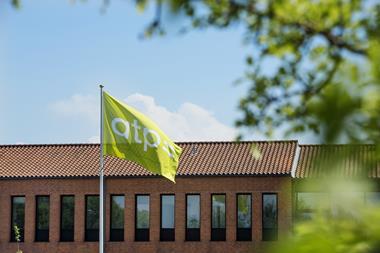DENMARK – Pensions provider PFA posted its highest-ever group investment return at DKK31bn (€4.15bn) for 2012, up from DKK27.3bn the year before, and said its increased allocation to corporate bonds had been rewarded.
Chief executive Henrik Heideby said: “Contrary to received wisdom, both shares and bonds delivered big plusses at the same time.”
Central bankers in the US, Europe and China had all pumped out large quantities of liquidity, and like tidal water, this had lifted everything and created an unusual investment year, he said.
Corporate and emerging market bonds produced a return of 14.8%, with European credit bonds performing particularly well, returning 27.4%, the pension fund said.
“For several years, we have had more and more of a focus on credit bonds, where we invest directly in companies – which did well,” Heideby said.
In all, the PFA now has DKK50bn invested in credit bonds, he said.
Despite turbulence in the euro-zone during 2012, PFA made a profit of 11.5% on European sovereign debt.
The return on mortgage bonds was lower, however, at between 6% and 9%, though this was above the general mortgage market return of 5%, it added.
Investments in Danish equities produced a return of 28.7%, PFA said, adding that active management had allowed it to beat the Danish stock market as a whole, which ended the year up 26.6%.
Traditional with-profit pension plans returned 11% in 2012, while customers with PFA Plus unit-link plans made profits of between 11% and 18%.
Meanwhile, Lærernes Pension – the pension fund for teachers – reported a return of 11.6% for 2012, but warned that profits would likely be lower this year.
In absolute terms, the investment return was DKK5.1bn, according to provisional figures.
Paul Brüniche-Olsen, managing director, said: “At the beginning of 2012, only a few thought we would make a double-digit profit, and it is doubtful whether this will be repeated in 2013.”
Many factors indicated that pension customers should get used to a long period of lower profits, he said.
Danish shares produced the highest returns at 26.5% for the year, but other equities and Lærernes Pension’s large holdings of credit bonds helped boost the overall return, the fund said.
Short-term, low-risk government bonds were not the biggest contributor to profits with their low yields, returning 3.2%, but Lærernes pointed out that these assets only constituted a small part of total investments.
The account dividend for 2013 is being raised to 3.5% after tax, from the 3% set for last year, it said.
Separately, Sampension said it has reaped a good profit on Italian government bonds.
Kasper Ullegård, head of bonds at the labour market pension fund, said: “By going into Italian government bonds instead of Danish bonds, over a period of about a year we earned more than DKK1bn just as a result of price changes.”
He explained that a pack mentality had developed among investors, in which they sought to offload Italian sovereign debt.
“The situation was certainly serious – and to some extent it still is – but it was clear to us that the market had gradually become skewed,” Ullegård said.
In a country like Italy, the relatively high level of government debt was a challenge, he said, but he added that many factors were now pointing in the right direction.
“For us, it has been important that Italy actually has undertaken reforms that tackle the long-term economic problems that an ageing poses purely financially on state finances,” he said.
Sampension also reported that unit-link pension plans returned 9.82-11.59% in 2012, up from 0.88-6.56% in 2011.
Lastly, commercial provider AP Pension said it has gained improved terms for its outsourced property administration, after signing a new deal with DEAS.
The new agreement came as a result of last year’s merger between AP Pension and financial sector pension fund FSP, and the necessary coordination of the two previously separate real estate investment portfolios.
Peter Olsson, head of property at AP Pension, told IPE the new agreement was a renegotiation of the old deals with DEAS, and the terms were now more favourable.
“Money talks, so the bigger you are the better terms you get,” he said.
AP Pension’s real estate portfolio consists of 75 commercial and residential properties with a value of DKK5.5bn.
Olsson said the fund was confident DEAS would continue to deliver good economic results.












No comments yet